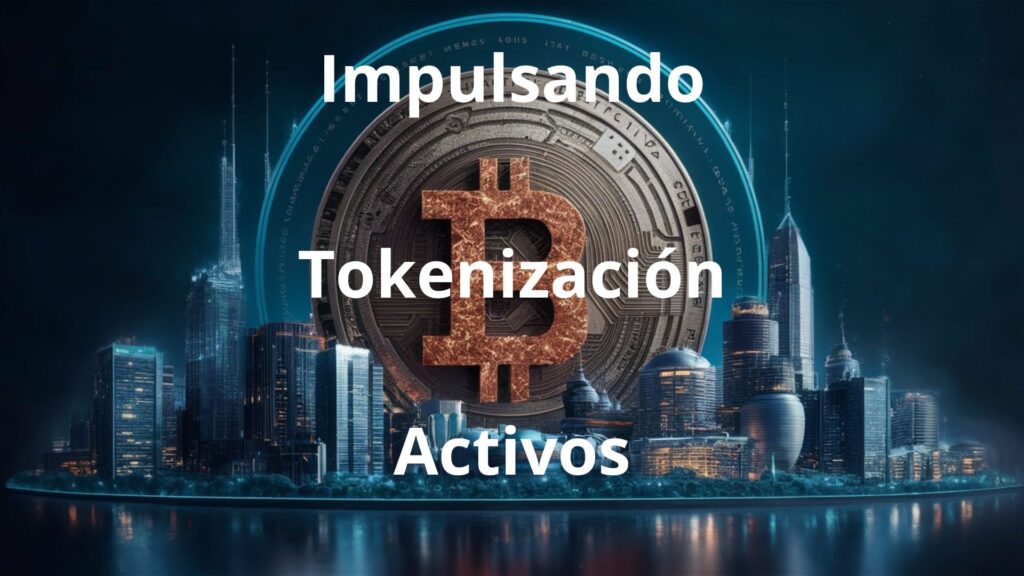Asset Tokenisation: The Blockchain Industry's Drive Towards $291 Billion
The blockchain industry has come a long way since its emergence, significantly transforming the technological and financial landscape. According to a recent report by GlobalDataGlobal revenues from blockchain platforms and services are expected to grow from $12 billion in 2023 to $291 billion in 2030. This expansion is being driven by specific areas such as asset tokenisation, blockchain development and infrastructure services. In this article, we explore how asset tokenisation is emerging as the next big application of blockchain and its potential impact on various sectors.
The Evolution of the Blockchain Industry
Since its inception, the blockchain has been recognised for its ability to provide transparency, security and efficiency in a variety of applications. While its popularity was initially driven by excitement and novelty, the industry has matured and moved towards more specific and strategic applications. According to Nicklas Nilssonconsultant for Thematic Intelligence In GlobalData, "the initial enthusiasm for blockchain turned out to be a double-edged sword, as early adoption was driven by novelty rather than strategic value".
The Emergence of Asset Tokenisation
One trend highlighted in the GlobalData report is the emergence of asset tokenisation as the next major application of blockchain. Asset tokenisation involves the conversion of physical or digital assets into divisible and tradable digital tokens. This innovation allows investors to purchase fractions of an asset rather than its entirety, facilitating market entry and improving liquidity.
Nilsson explains: "If cryptocurrencies were the first blockchain success story, asset tokenisation is the second. This technology has the potential to revolutionise various markets, especially those with illiquid assets such as real estate, precious metals and art.
Advantages of Asset Tokenisation
Asset tokenisation offers multiple benefits that are driving its adoption in the financial industry and beyond. Some of these benefits include:
- Fractional OwnershipIt allows investors to acquire a part of an asset rather than having to buy it in its entirety, lowering barriers to entry and democratising investment.
- Increased LiquidityBy converting physical assets into digital tokens, market liquidity is improved, making it easier to buy and sell assets more efficiently.
- Fast and Secure TransactionsBlockchain-based transactions are fast and secure, reducing settlement time and increasing transparency.
- Global AccessDigital tokens can be traded on global markets, allowing investors around the world to participate in the acquisition of assets.
Impact on Various Sectors
Asset tokenisation is beginning to have a significant impact in several sectors. In real estate, for example, tokenisation allows investors to acquire fractions of properties, facilitating the diversification of their portfolios and increasing accessibility to the real estate market. In the art world, tokens allow collectors and art enthusiasts to acquire parts of valuable works, democratising access to this traditionally exclusive market.
Future Perspectives
The adoption of asset tokenisation is still in its early stages, but the potential is huge. According to GlobalData, "converting various assets into tradable digital tokens lowers barriers to entry and improves global participation through greater liquidity and faster settlements". As more companies and sectors adopt this technology, asset tokenisation is expected to play a crucial role in transforming the global economy.
In conclusion, we can say that:
Asset tokenisation represents a significant evolution in the application of blockchain technology, with the potential to transform various industries and democratise access to valuable investments. As the blockchain industry continues to grow and mature, asset tokenisation is positioned as one of the most promising and disruptive innovations. With growth forecast to take blockchain industry revenues to 291 billion by 2030In this context, asset tokenisation is poised to be a key driver of this evolution.
This article has been compiled from information contained in the GlobalData report and other publicly available resources, providing an overview and analysis of the evolution and potential of asset tokenisation in the blockchain industry.

